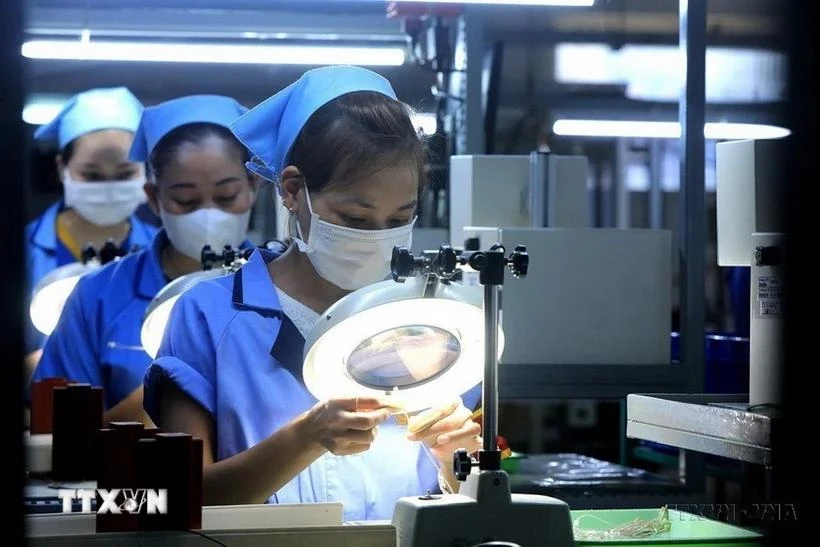Vietnam’s manufacturing stalls on weak export activities
The Vietnamese manufacturing sector remained in growth territory in November but overall business conditions improved to a lesser extent than in the previous month as slower rises in output and new orders were recorded, according to the S&P Global.

Illustrative image (Photo: VNA)
According to the latest report of the firm, the S&P Global Vietnam Manufacturing Purchasing Mangers’ Index (PMI) registered 50.8 points in November, signaling a second consecutive monthly improvement in business conditions following the contraction caused by Typhoon Yagi in September.
However, the reading was down from 51.2 in October and pointed to only a modest strengthening in the health of the sector.
Several enterprises raised production in response to higher new orders while others reported that demand was relatively muted, leading to the slowdown in growth. Although total new orders increased amidst signs of improving demand and the securing of new customers, weakness in international demand undermined overall growth.
In fact, new business from abroad decreased solidly following a slight rise in the previous month, with exports down to the largest extent since July 2023. While output and new orders continued to rise, albeit at weaker rates, employment decreased for the second month running in November. In some cases, firms lowered staffing levels to cut costs.
With workforce numbers down, businesses continued finding it difficult to complete orders on time. As a result, backlogs of work increased for the sixth month running despite at the slowest pace since June.
S&P Global’s survey also showed that Vietnamese manufacturers have faced lengthening suppliers’ delivery times through the final quarter of the year. Lead times were extended for the third month in a row and to a greater degree than was the case in October. Suppliers encountered transportation issues and difficulties in sourcing raw materials.
At the same time, businesses reduced their purchasing activity for the second time in the past three months, following a slight increase in October. The drop in input buying and issues with the delivery of materials meant that stocks of purchases decreased again and at a marked pace. Stocks of finished goods were also down as inventories were used to help meet order requirements. The sold depletion was the most substantial since July.
Business confidence ticked down for the second consecutive month and was the lowest since January. However, manufacturers remained optimistic that output will rise over the coming year, with expectations linked to plans for new product launches and business expansions, plus rising new orders.
According to Economics Director at S&P Global Market Intelligence Andrew Harker, while the Vietnamese manufacturing sector remained in growth territory in November, the rates of expansion in output and new orders faltered slightly rather than continuing to gain momentum following disruption caused by Typhoon Yagi in September.
The slowdown reflected weakness in international demand, with exports down to the largest extent since July 2023, he said, adding firms were keen to keep a lid on costs and this contributed to another reduction in employment, in turn limiting their ability to complete orders on time.
He expressed his hope that demand will solidify in the coming months, giving firms the confidence to expand capacity./.
VNA
 Export growth, creating momentum for acceleration in new period
Export growth, creating momentum for acceleration in new period
 To enhance social policy credit loan resources
To enhance social policy credit loan resources
 Businesses are in peak season
Businesses are in peak season
 Regulations on management of industries’associations
Regulations on management of industries’associations
 Bau Bang enhances infrastructure, urban development
Bau Bang enhances infrastructure, urban development
 Removing "bottlenecks" to drive development for southeastern region
Removing "bottlenecks" to drive development for southeastern region
 Promoting sci-tech enterprises’ development
Promoting sci-tech enterprises’ development
 Trade promotion and connection strengthened for collective economic sector
Trade promotion and connection strengthened for collective economic sector
 Multifaceted effectiveness from Japanese projects
Multifaceted effectiveness from Japanese projects
 Provincial DoIT holds 2024 energy manager training course
Provincial DoIT holds 2024 energy manager training course














